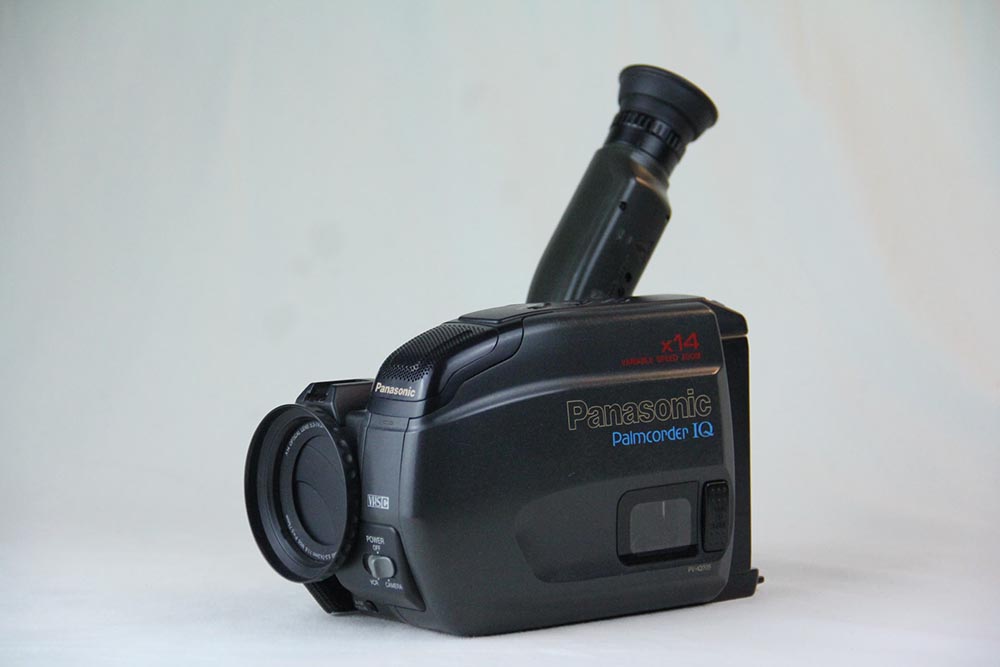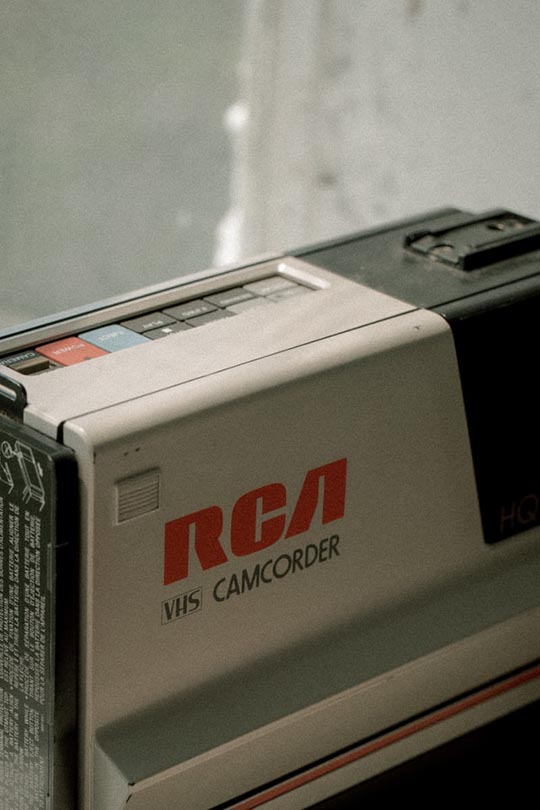When Were Camcorders Invented? History of the Camcorder
Last Updated on

We have a wealth of technology at our literal fingertips, from our smartphones to our tablets to our laptops. It wasn’t always this way, however. The first home video system was offered by Ampex in 1963, which included a TV monitor, special equipment, and an Ampex VR-1500 that was around 100 pounds.
In 1982, JVC and Sony announced the creation of the camera/recorder—or camcorder. The first true camcorder, the Betacam system, was released by Sony in May of 1983.
That cumbersome video technology would eventually evolve into the modern handheld camcorder or smartphone with video capabilities, but it took a while to get there.

The Transition from Video Cameras to Consumer Camcorders

Video cameras were originally designed for television broadcasts. They were large and heavy, mounted on pedestals and connected to recorders in different rooms.
As the demand for more mobility and practicality increased, the video camera evolved from a massive piece of equipment to a more compact video camera with a portable video recorder. Both could be transported to a shooting location easily compared to the pedestaled camera, but two people were required for operation. These cameras relied on special videocassette records: VHS, U-matic, and Betamax.
Eventually, this led to the Betacam from Sony. Designed for professionals, this unit contained the camera and recorded to allow the operator more freedom. The Betacam relied on the same cassette format as Betamax, but with a different recording format. It quickly rose to become the standard for broadcast news.
The first consumer camcorder came in 1983—the Betamovie BMC-100P. This camcorder could rest on the operator’s shoulder and used a Betamax cassette.
In 1984, Kodak launched the new camcorder format, 8mm video format, and Sony, Panasonic, RCA, and Hitachi all released camcorders with a VHS cassette. These early camcorders were mostly used by videographers and enthusiasts.
The next big move for the industry came in 1985. Sony introduced the first chip-based camcorder, “Video 8,” and JVC introduced the VHS-C, a compact alternative to the larger VHS cassette.
Then, in 1992, the first color LCD screen was brought to market, replacing the old viewfinder that required the operator to squint through a small hole to record a scene.

The Shift to Digital
The video technology we enjoy today first hit the scene in 1995 from Panasonic and Sony. The first digital video camcorder started a rapid evolution in digital technology, seeing the camcorder go down in size and in price. The technology became more accessible to the masses compared to expensive, shoulder-operated cameras that cost over $1,000.
Now, the camcorder can fit in the palm of your hand. While you can buy camcorders for thousands or tens of thousands of dollars, a quality entry-level camcorder can be purchased for only $100 or so.

Conclusion
Video technology rapidly evolved from large, unwieldy, and expensive systems to digital recording. Though it took decades, the first consumer camcorder started the wave of video technology development making these devices smaller, easier to use, and incredibly high quality. Eventually, the cutting-edge smartphone technology will seem just as antiquated as those original pedestal cameras once reserved for broadcast professionals.
- See also: 10 Best Camcorders for Kids
Featured Image Credit: Leonard Reese, Unsplash
About the Author Robert Sparks
Robert’s obsession with all things optical started early in life, when his optician father would bring home prototypes for Robert to play with. Nowadays, Robert is dedicated to helping others find the right optics for their needs. His hobbies include astronomy, astrophysics, and model building. Originally from Newark, NJ, he resides in Santa Fe, New Mexico, where the nighttime skies are filled with glittering stars.
Related Articles:
When Were Binoculars Invented? History, Today & Future
How to Clean a Refractor Telescope: Step-by-Step Guide
How to Clean a Telescope Eyepiece: Step-by-Step Guide
How to Clean a Rifle Scope: 8 Expert Tips
Monocular vs Telescope: Differences Explained (With Pictures)
What Is a Monocular Used For? 8 Common Functions
How to Clean a Telescope Mirror: 8 Expert Tips
Brightfield vs Phase Contrast Microscopy: The Differences Explained
